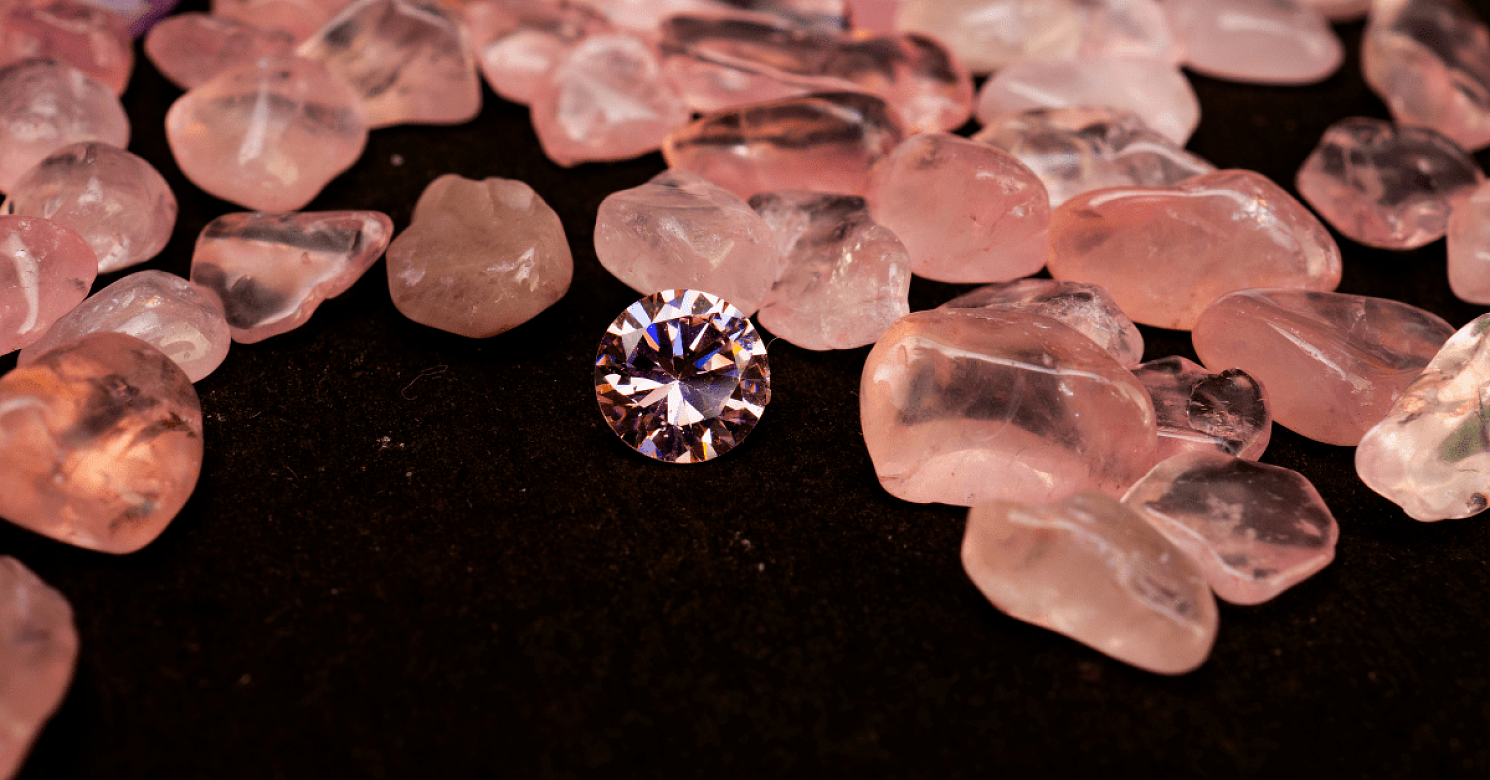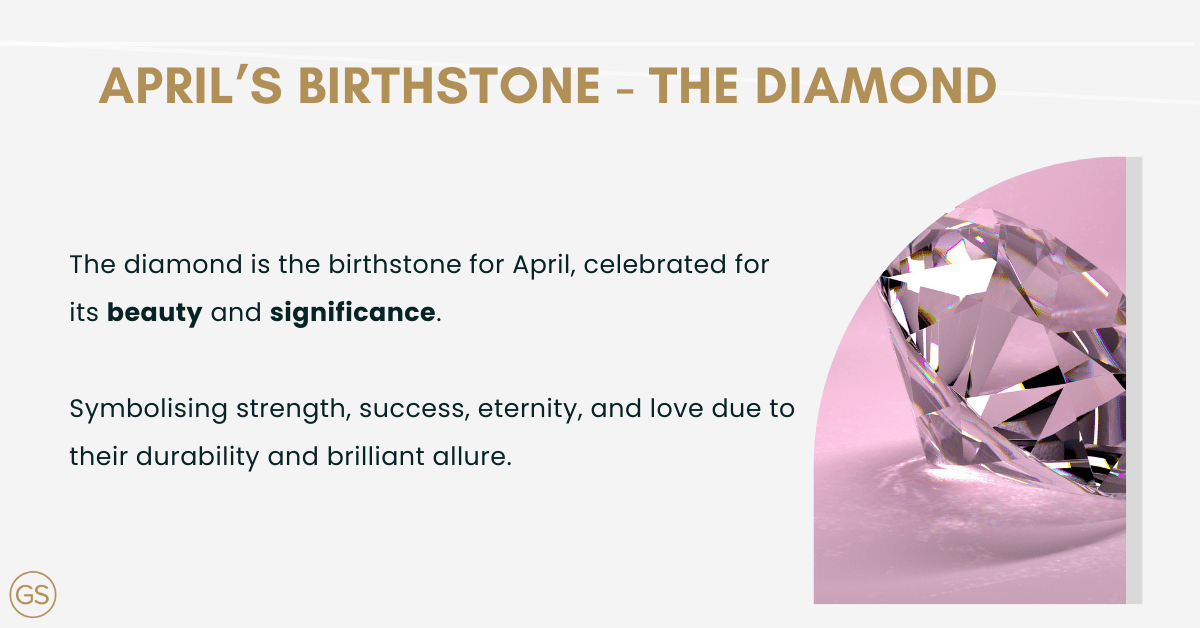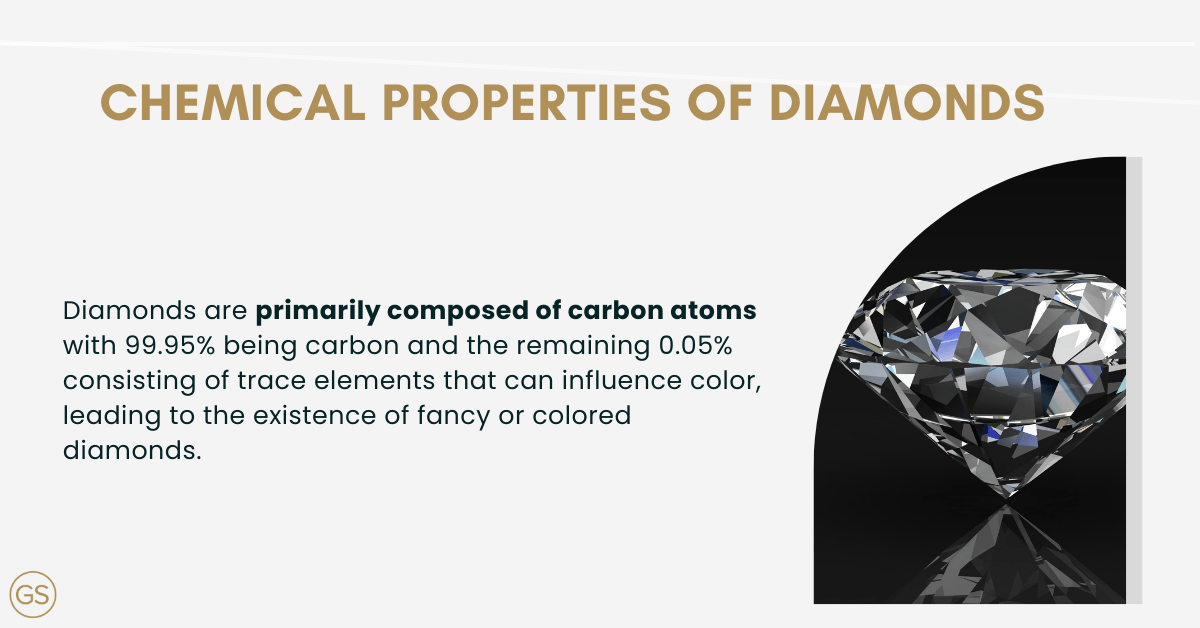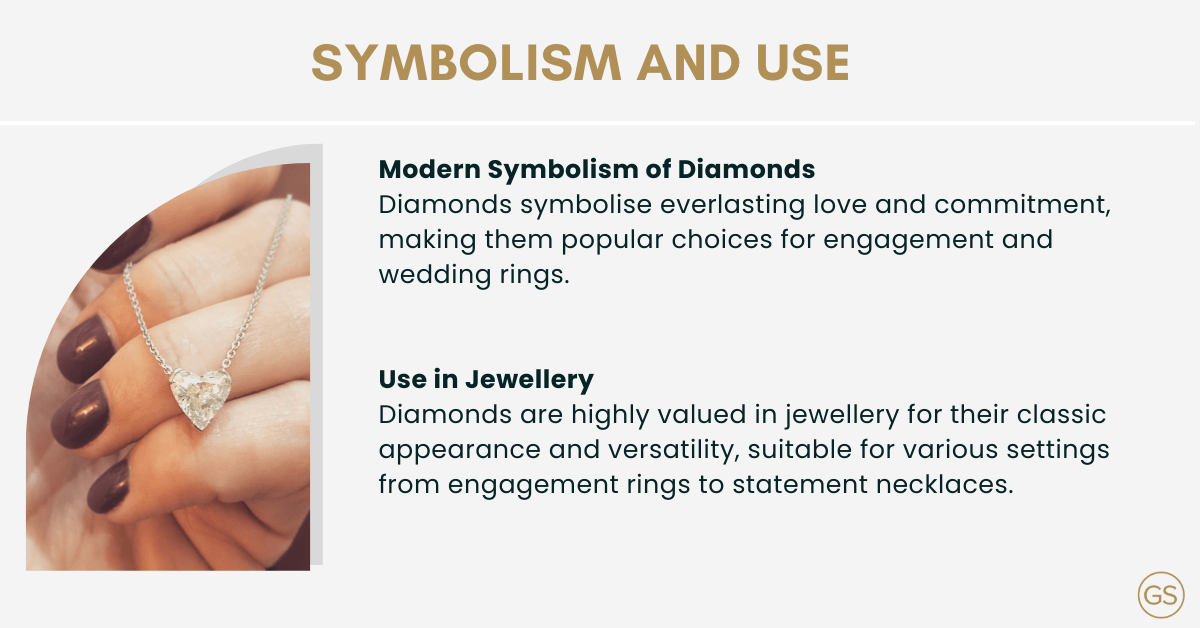
April’s birthstone is diamond. If you’re born in April, you’re lucky enough to call the diamond - widely accepted as the most beautiful stone, as your birthstone.
Traditionally, the April birthstone of diamond has been synonymous with the colourless variant that is popular in jewellery, as well as our own traditional view of the stone. However, in recent years, the April birthstone has evolved to include coloured diamonds and even lab grown diamond variants that continue to grow in prominence.
As the hardest natural material on earth, the diamond birthstone for the month of April holds special significance in the birthstone chart. In this article, we’ll learn about the meaning, significance, and evolution of the April birthstone as technology and ethical considerations continue to drive change in the diamond industry.
Birthstones are certain types of gemstones that hold a symbolic meaning and are significant for those born in a specific month. The origin of birthstones can be traced back to the Abrahamic religion, where holy priests would wear breastplates embedded with 12 unique precious stones. As time went on, the meaning of these stones would come to be associated with the 12 calendar months of the year. In some eastern cultures, the 12 zodiacs were the link between the stones and one’s year of birth, and the tropical zodiac has also had birthstones assigned to each star sign.
While the historical origin of birthstones is less than clear, one thing is certain — they still hold great value for people all over the world as a reflection of their personality or even a glimpse into what their future holds.

The diamond is the official birthstone for those born in the month of April. Taking its modern namesake from the Greek word “Adamas” which means “invincible”, diamonds have a rich historical significance and hold great meaning.
Diamonds represent success, strength, eternity, and unsurprisingly, unwavering love. Diamonds have been thought to represent these values due to their inherent characteristic of being the hardest naturally occurring substance in the world — they seem to last forever, they have a brilliant allure unmatched by other gemstones, and they are impervious to damage or scratches.
Evidence of diamond gemstones has been discovered to be as early as the 2nd millennium BC. Tools have been found to include diamonds on the tip for the purposes of drilling, which is a technology that is still applied today. Diamonds were first mined in India and later on in Brazil in the 1700s, and were traded extensively as both a precious commodity and a useful industrial resource.
Modern diamond mining began in the 1860s in South Africa and has since grown to form one of the world’s biggest gemstone markets, with diamond production estimated to be about 130 million carats in 2013 alone.
The diamond market has come a long way since, with the recent popularity of lab grown diamonds rising due to it being a more affordable but equally brilliant alternative to naturally mined diamonds.

Aside from their reputation as the world’s most popular gemstone, diamonds have also earned other curious reputations in different cultures and time periods. According to ancient legends from various cultures:
These are superstitions, of course, but it's nevertheless interesting to know how diamonds were valued in the past!
Diamonds are made of the carbon element, but in a specific arrangement of atoms — they have a tetrahedral crystal structure with each carbon atom connected to four other carbon atoms by covalent bonds. This rigid structure is what gives diamonds their incredible durability and strength.
Most diamond gemstones consist of 99.95% carbon, with the remaining 0.05% made up of other trace elements that often affect the colour of the diamond. When a diamond is formed, the presence of certain trace elements can result in dramatic colour variations. Diamonds with these vivid colours are called fancy diamonds or coloured diamonds and can be found on the market as well.

Sadly, due to the lucrative nature of the diamond trade and its rarity, there are some real-world problems about how natural diamonds are mined all across the world. Unethical diamond mining is an uncomfortable truth that many diamond buyers are not aware of.
Some countries where diamonds are mined are plagued by the issue of labour exploitation for the purpose of diamond mining, often paying miners meagre wages while entrapping them to continue working. There have been investigations into the use of child labour for diamond mining as well.
These ethical considerations have led many diamond suppliers and traders all over the world (including GS Diamonds) to stop accepting diamonds produced by unethical means. Diamonds are now declared ethical to ensure that buyers are supporting the right industry and not contributing to the problem of unethical diamond mining.
Diamonds remain one of the top choices in the world for jewellery due to their classic appearance and versatility of use in any setting from an engagement ring to a statement necklace. Today, diamonds are best known to symbolise everlasting love and commitment between lovers — as seen in the hundreds and thousands of engagement and wedding rings that are exchanged each year. Not only that, they are also traditionally given as gifts during 60th wedding anniversaries as a celebration of the diamond jubilee.
Whether you’re looking to find the perfect diamond birthstone for an April baby, or are planning to propose to one, look no further than GS Diamonds for your diamond search. Our collection of natural diamonds are ethically sourced, and we have a selection of lab grown diamonds for buyers with a selective budget. Browse our online store or come to our diamond showrooms in Sydney and Melbourne to see them for yourself!